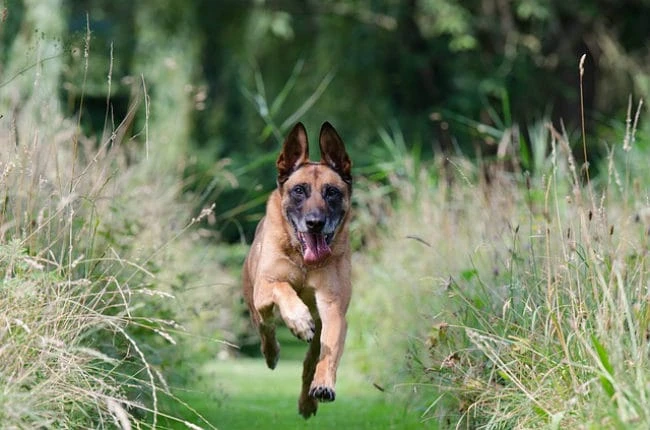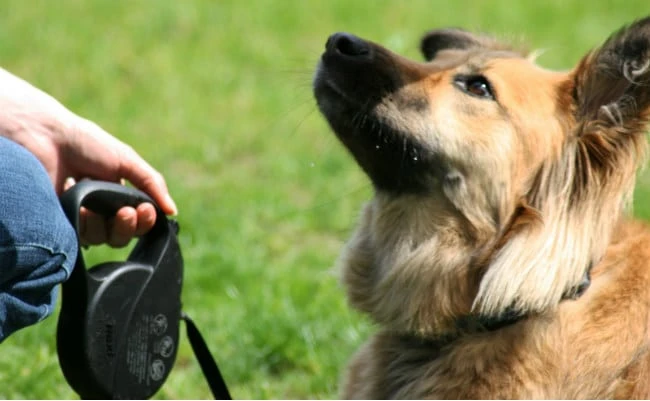Dog Separation Anxiety, Canine Separation Anxiety, Puppy Separation Anxiety

In this section we will discuss dog separation anxiety and the best dog training techniques, tips, tools, devices, methods and commands on how to cure this upsetting condition – after all your pooch does not want to be feeling this anxious or upset anymore than you would.
We will describe a recent case where we used a particular dog training technique to help cure a close relative’s Yorkshire Terrier of this upsetting and debilitating behavior problem.
If you want more information on how to cure more specific dog or puppy behavior problems such as those listed below.
- Crying
- Destructive Behavior
- Dog Chewing
- Accidents around the House
- Dog Digging problems
- Loss of Appetite
- Salivation (Excessive)
- Dog vomiting
- Dog whining
- Excessive Barking and Whining
If you want to cure these problems then check out our sections on curing more common problems associated with dog separation anxiety and separation anxiety in dogs.
A step by step guide to how we cured a Yorkshire Terrier called Honey from separation anxiety
This is quite a recent story where a very close relative needed our help regarding their young Yorkshire Terrier called Honey.
The dog training techniques and methods that we used to cure this nasty case of dog separation anxiety are not a definitive treatment of separation anxiety in dogs but a solution that worked for Honey.
Often when treating dogs with this separation anxiety disorder you may need to ‘suck it and see’ until you find a specific technique that has the desired result.
Anyway this is the three step program that we used and you can use too.
Step 1 – How the anxiety started.
Honey had developed separation anxiety after a frightening experience that she encountered when scared by a noisy firework.
Honey was 3 years of age when she developed this problem and had started exhibiting behavior problems including, digging, barking and crying after her owner (my sister) had left the House.
The dog obedience training techniques that we used took approximately 6 weeks to cure the anxiety but will vary from dog to dog and also depending on the severity of the problem.
To help cure this problem we started by teaching Honey that she did not always have to be around the owner to feel safe and secure.
We also advised the owner to ignore any attention craving behavior such as jumping up or barking.
It is also important to go back and re-visit some basic dog training commands such as down & stay.
After a period of about a week the owner had managed to increase the amount of time that Honey was left on her own to 30 mins – without Honey showing any behavior problems.
Step 2
Now the next step to help cure this problem was to get Honey used to being outside when the owner was inside.
We encouraged the owner to do this in very small segments during the day – a few minutes each time.
We gradually increased the time that they were apart over the next two weeks.
To help cure the separation anxiety in Honey the owner limited the time that they were apart to a few seconds and up to a minute at first.
The idea is not to wait until Honey started getting stressed and anxious but for the owner to be reunited before any signs of Honey showed any signs of separation anxiety.
As we are using positive reinforcement throughout the dog training process – Honey was given a treat after they had been reunited.
Top Dog Training Tip – Only reunite yourself with your dog when he is quiet and not stressed.
If you wait until he is stressed you are teaching your dog that if he becomes anxious and misbehaves he will get a treat – i.e. being reunited with you!
Step 3
Now we had to cure Honey’s dog separation anxiety problem by eliminating the actual distress that Honey was feeling every-time the owner left the House.
The aim is to desensitize the triggers that was causing Honey’s separation anxiety.
We started by watching the triggers that were causing Honey to get upset – and we realized that the owner putting her coat on and even picking up her keys got Honey agitated.
So what did we do?
We started by getting the owner to put her coat on and then not leave the House and also to walk around jangling the car keys and again not going out.
This trained Honey to realize that just because the owner put her coat on or jangled the keys did not need to be something to get anxious about – it was desensitizing Honey’s fears and making the triggers a normal part of her life.
After just over two weeks Honey didn’t batter an eyelid when the owner picked up the keys or put her coat on.
Step 4
The final step in curing the dog separation anxiety that Honey was suffering from was to expand on the training process outlined in Step 3.
- We advised Honey’s owner to wait until Honey was relaxed and not at all stressed and then to leave the House but only to step outside the door and then reenter the House after about 30 seconds – but before Honey made any sort of noise.
- We advised the owner to do this daily and gradually increase the time that she left the House.
- After about a week the owner was able to increase the time that she was out of the House from just stepping outside the door for a few seconds to going around to visit a neighbor or go for a short drive around the block.
- Before the owner left the House we advised her to give Honey something to keep her busy – a favorite toy, or a treat.Honey’s favorite treat happened to be a bone filled with peanut butter.This kept Honey occupied for long periods of time and the result was a happy dog with no messy accidents around the House.
- It was important that the owner didn’t make a big fuss when she returned home – if she had it would just be reinforcing to Honey that her leaving the House was a really big deal.
This complete training regime cured Honey’s separation anxiety in about six weeks.
Of course it can take longer – but it is important to remain consistent and be realistic and not expect results immediately.
Of course there are medications that are available for dog separation anxiety but this is something that doesn’t fit well with our ethos on dog obedience training.




